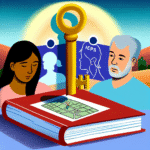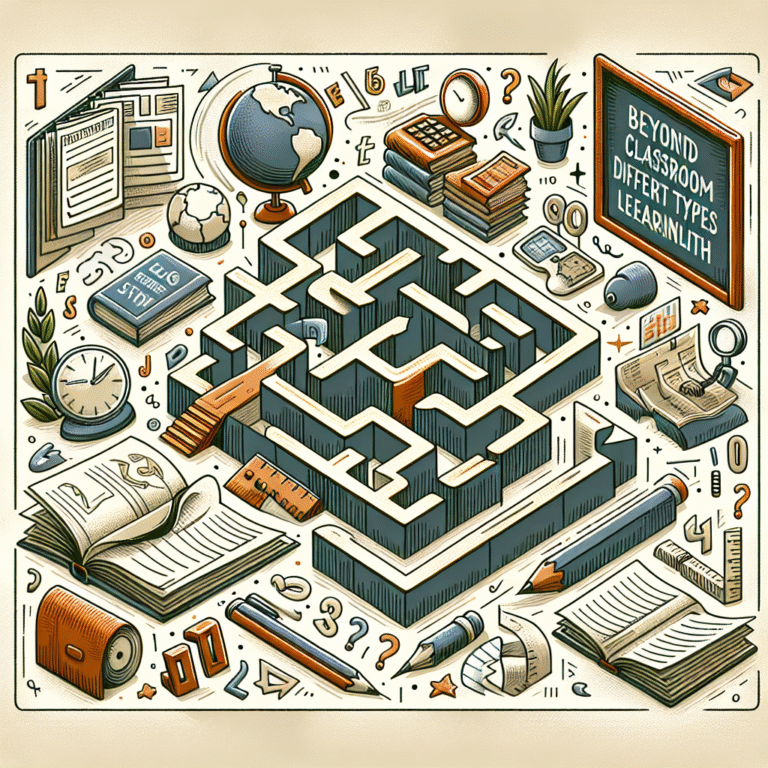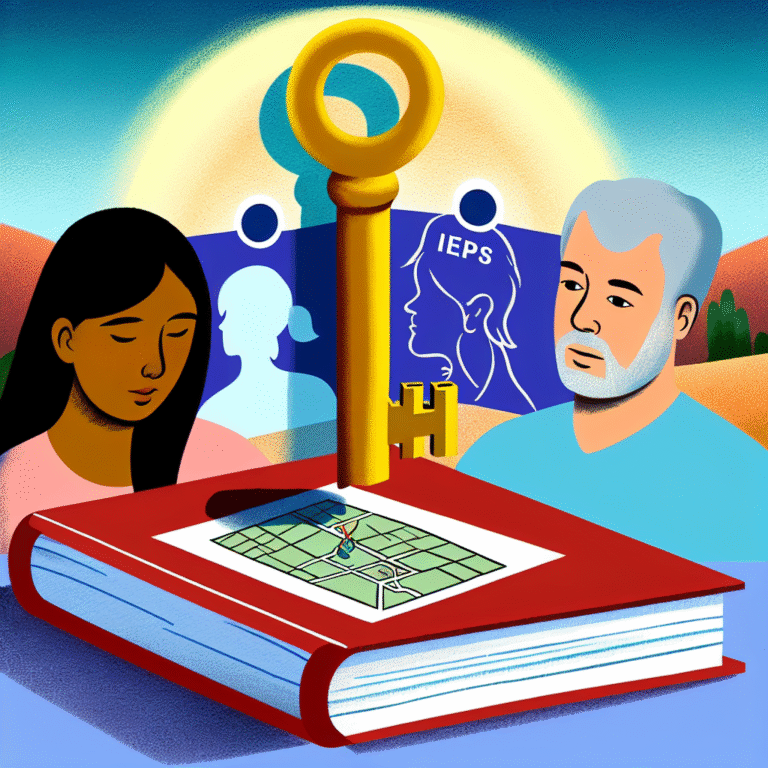
Test at Home: Essential Tips for Identifying Learning Disabilities
Introduction
In today’s fast-paced world, the importance of recognizing and addressing learning disabilities cannot be overstated. Early identification can drastically improve outcomes for individuals who struggle with learning. Yet, the process of assessing learning disabilities still often takes place in clinical settings, which can be inaccessible—both logistically and financially—for many families. Thus, the concept of a Test at Home: Practical Tips for Identifying Learning Disabilities emerges as a vital tool for parents, educators, and caregivers alike.
By utilizing the right strategies and resources, identifying potential learning disabilities from the comfort of one’s home has become more feasible than ever. This article will provide you with practical tips, real-life case studies, and essential tools for assessing learning disabilities at home. Whether you’re a parent concerned about your child’s academic performance or a teacher looking to better support your students, these insights are designed to empower you.
Understanding Learning Disabilities
What Are Learning Disabilities?
Learning disabilities (LD) are neurological conditions that affect the brain’s ability to process, store, or retrieve information. They can manifest in various conditions, such as dyslexia, dyscalculia, and attention-deficit/hyperactivity disorder (ADHD). Each of these learning disabilities affects different areas of learning and can impact an individual’s educational experience and overall quality of life.
Why Early Detection Matters
Recognizing learning disabilities early can significantly alter a child’s academic trajectory. Studies indicate that children who receive early intervention are more likely to develop effective coping strategies and achieve academic success. Educational programs specifically tailored to the individual’s needs can bridge gaps, ensuring that children are equipped for both school and life beyond the classroom.
Test at Home: Practical Tips for Identifying Learning Disabilities
1. Familiarize Yourself with Common Signs
Before diving into testing, it’s essential to understand the common signs of learning disabilities. Below is a chart illustrating several key symptoms for different types of learning disabilities:
| Learning Disability | Common Signs | Observational Tips |
|---|---|---|
| Dyslexia | Difficulty reading, spelling errors | Monitor reading habits; note struggles with phonetics. |
| Dyscalculia | Trouble with math concepts or number sense | Check how your child handles basic arithmetic tasks. |
| ADHD | Inattention, hyperactivity, impulsivity | Observe attention span during activities or conversations. |
By familiarizing yourself with these signs, you can begin to identify potential concerns and take the next steps in the assessment process.
2. Create a Structured Learning Environment
To accurately identify learning disabilities, it’s necessary to have a structured, distraction-free environment for assessment. Ensuring that your child has a quiet space with all necessary materials helps facilitate the testing process. Take notes on how they respond to different tasks and if any patterns emerge over time.
3. Utilize Online Screening Tools
The digital age has given rise to numerous online screening tools designed to help identify learning disabilities. Websites like Understood.org and the National Center for Learning Disabilities offer interactive quizzes and resources tailored to various age groups. Utilize these free assessments to gain preliminary insights into your child’s learning profile.
4. Observe Specific Learning Tasks
Conduct simple, age-appropriate tasks that cover different areas of learning: reading, writing, math, and comprehension. Record the child’s performance, noting any consistent struggles.
Example Task: Reading Comprehension
- Task: Read a short story and summarize it.
- What to Observe: Difficulty recalling key points, problems with wording, or confusion about the story’s main idea.
Case Study 1: Anna’s Reading Struggles
Anna, a 9-year-old girl, often struggled with reading. After observing her during at-home reading sessions, her parents noted significant hesitation with new words and difficulty recalling story details. They used an online screening tool that highlighted dyslexia as a potential concern. With this insight, they sought professional evaluation and received tailored literacy support. Today, Anna reads at grade level thanks to her parents’ proactive approach.
Analysis of Case Study 1
Anna’s case emphasizes the importance of observation and utilizing available resources at home. By taking note of her challenges, her parents were prepared to seek further help, demonstrating the value of the Test at Home: Practical Tips for Identifying Learning Disabilities.
5. Engage in Open Conversations
Having open discussions with your child about their learning experiences is crucial. Talk about their feelings toward school, homework, and any difficulties they may be encountering. This open dialogue fosters an understanding of their challenges, allowing you to offer support and encouragement.
6. Consult with Educators
Building a partnership with your child’s teachers can provide invaluable insights. Teachers often have experience identifying learning disabilities and can share observations from the classroom. Schedule regular check-ins to discuss your child’s progress, any observed issues, and potential strategies for support.
Tools and Resources
In addition to the screening tools mentioned earlier, there are numerous resources dedicated to supporting families in understanding learning disabilities. Here’s a small list to help guide your search:
- Books: Titles such as "Overcoming Dyslexia" by Sally Shaywitz provide in-depth methods and insights.
- Websites: Multiple educational resources like Reading Rockets and Learning Disabilities Association of America feature articles and videos relevant to learning disabilities.
- Support Groups: Finding local or online support groups can offer community and shared experiences for parents navigating similar challenges.
Case Study 2: James’s Math Anxiety
James, a 12-year-old boy, faced continual frustration with math. His parents utilized resources available through local educational sites, allowing them to learn about dyscalculia. By participating in a parent group, they discovered effective at-home strategies to assist James. After consistent support and materials tailored to his learning style, James has made significant improvements.
Analysis of Case Study 2
The success James experienced through careful research and community involvement illustrates how Test at Home: Practical Tips for Identifying Learning Disabilities can extend into collaborative efforts with other parents and educational resources.
Conclusion
Identifying learning disabilities at home can feel daunting, but by empowering yourself with knowledge and strategies, you can make a significant impact on your child’s educational journey. The Test at Home: Practical Tips for Identifying Learning Disabilities evoked in this piece encapsulate the essence of awareness, observation, and advocacy.
As you move forward, remember to believe in the potential of every learner. Early identification and intervention open doors, providing critical support for children to thrive academically and personally.
FAQs
1. What are the most common learning disabilities?
The most common learning disabilities include dyslexia (reading difficulties), dyscalculia (math challenges), and ADHD. Each has unique symptoms and requires specific approaches for support.
2. How can I conduct a basic assessment at home?
Utilize structured learning tasks, observe specific challenges, and use online screening tools. Engage in open conversations to further understand your child’s experiences.
3. When should I seek professional evaluation?
If tests and observations consistently indicate difficulties, it’s advisable to seek a professional evaluation. Early intervention is key to effective support.
4. Are there resources available for parents?
Yes, many resources exist, including books, educational websites, online forums, and local support groups tailored for parents of children with learning disabilities.
5. How do I advocate for my child’s needs in school?
Start by communicating openly with your child’s teachers, discussing observations, and asking for additional support or resources that may be available within the school system.
Using these insights and tools, you can create a proactive environment for identifying learning disabilities in the home. Every child deserves the chance to succeed, and early intervention can make all the difference.






